Table Of Contents
Are you considering installing a new fence around your property but unsure of which material to choose? Composite fencing may be the perfect option for you. In this article, we will explore what composite fencing is, the materials used in its construction, the numerous benefits it offers, the installation process, and how it compares to other fencing materials such as wood, vinyl, and metal. We will also discuss the cost considerations associated with composite fencing. Whether you are looking for durability, low maintenance, or eco-friendliness, composite fencing may be the ideal choice for your property.
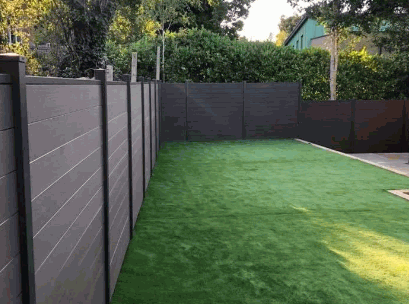
What Is Composite Fencing?
Composite fencing is a sustainable and eco-friendly alternative to traditional wood fencing materials.
It is designed to mimic the look and feel of natural wood but with the added benefits of being extremely durable and resistant to rotting, warping, and insect damage. By utilizing recycled materials, composite fencing helps reduce the demand for virgin timber and minimizes the impact on forests.
The low maintenance requirements of composite fencing make it a practical choice for homeowners looking to enhance their property with a long-lasting and environmentally conscious fencing solution.
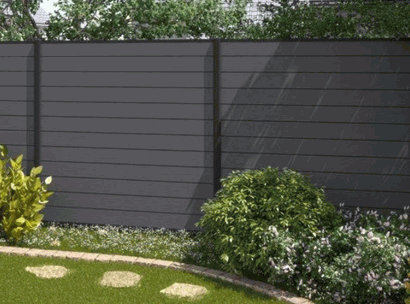
What Are The Materials Used In Composite Fencing?
Composite fencing utilizes a blend of composite wood and recycled materials to create durable fencing panels and structures.
These innovative fencing materials often consist of a mixture of wood fibers, plastic, and sometimes even bamboo, all of which are sustainable resources. The recycled components, such as reclaimed wood fibers and plastic, are combined with binding agents to produce strong and weather-resistant composite boards. Through advanced manufacturing techniques, these composite boards can be molded and textured to mimic the look and feel of natural wood, offering a more environmentally friendly alternative to traditional wood fencing. The result is a sturdy and long-lasting fencing solution that requires minimal maintenance and contributes to a greener planet.
What Are The Benefits Of Composite Fencing?
Composite fencing offers a range of benefits, including exceptional durability, low maintenance requirements, eco-friendly attributes, and a wide selection of styles and colors.
The durability of composite fencing makes it a long-lasting investment for homeowners, as it is resistant to rotting, warping, and insect damage. Its eco-conscious design is appealing to those seeking sustainable options, as it is often made from recycled materials. Its aesthetic versatility allows for customization to complement various architectural styles and landscaping designs, enhancing the overall look of a property. With its low-maintenance nature, composite fencing saves both time and money for property owners, requiring minimal upkeep while maintaining its visual appeal.
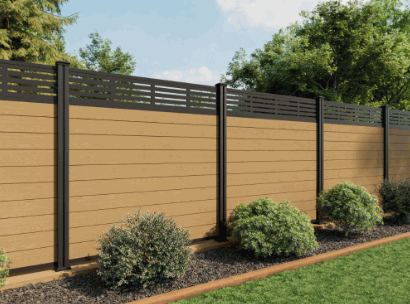
Durability
Composite fencing is renowned for its exceptional durability, weather-resistant properties, and long-lasting construction that ensures enduring quality.
Its resilience to various weather conditions makes it a popular choice for outdoor use, able to withstand harsh sunlight, heavy rain, and even snow without warping or rotting. The composite construction techniques used in manufacturing these fences contribute to their remarkable longevity, as they are designed to resist fading, cracking, and peeling over time. This long-term structural integrity helps maintain the fence's appearance and functionality, providing homeowners with a reliable and low-maintenance fencing solution for years to come.
Low Maintenance
One of the key benefits of composite fencing is its low maintenance requirements, thanks to the durable nature of composite materials that require minimal upkeep for long-lasting performance.
This makes composite fencing an ideal choice for homeowners looking to add aesthetic appeal to their property without the hassle of frequent maintenance.
Unlike traditional wood fencing, composite fencing does not require staining, painting, or sealing to keep it looking pristine. Regular cleaning with mild soap and water is usually all that's needed to maintain its appearance, saving both time and money in the long run.
The longevity of composite materials ensures that your fence will remain structurally sound and visually appealing for many years to come.
Eco-Friendly
Composite fencing stands out as an eco-friendly fencing option due to its sustainable manufacturing processes, use of recycled materials, and minimal environmental impact compared to traditional fencing materials.
By utilizing recycled components such as plastic and wood fibers, composite fencing reduces the demand for natural resources. The production of composite fencing involves innovative manufacturing techniques that significantly decrease energy consumption and emissions, contributing to a lower carbon footprint. The durability and longevity of composite fencing contribute to its sustainability by reducing the need for frequent replacements, thus further reducing waste in landfills. These aspects showcase how composite fencing exemplifies a greener alternative in the fencing industry.
Variety Of Styles And Colors
Composite fencing offers a diverse range of styles and colors, allowing homeowners to choose contemporary designs that perfectly complement their outdoor spaces and preferences.
With modern composite fencing options, individuals can explore sleek and clean lines for a sophisticated look or opt for more intricate patterns for added visual interest. The customization possibilities in composite fencing are endless, enabling one to create a unique and personalized outdoor oasis.
From earthy tones like brown and grey to vibrant hues like red and blue, the array of colors offered in composite fencing opens up a world of possibilities for creating a modern and stylish outdoor environment.
How Is Composite Fencing Installed?
The installation process of composite fencing involves setting up fence posts, installing panels, and adding finishing touches with the help of specialized composite hardware for ease of assembly.
- To begin the installation, start by marking the locations for the fence posts according to your desired layout.
- Dig holes for the posts ensuring they are deep enough for stability.
- Place the posts in the holes and fill them with concrete to secure them in place.
- Once the posts are set, attach the composite panels to the posts using screws or clips, following the manufacturer's instructions.
- Make sure the panels are level and evenly spaced for a professional-looking finish.
- Use composite hardware such as brackets and caps to add a polished touch to your newly installed composite fence.
Preparation
Prior to installing composite fencing, thorough preparation is essential, including assessing the layout, dimensions, and design considerations to ensure a successful installation process.
- By analyzing the layout of your outdoor space and determining the boundary lines for the fence, you can strategically plan the placement of each composite panel, taking into account any slopes or uneven terrain. Ensuring that the design aligns with your property aesthetics and functional needs is crucial for a seamless composite fencing installation.
- Preparing the ground by clearing vegetation, leveling the area, and addressing any drainage issues will contribute to the long-term stability and durability of the fence. These preparatory measures lay the foundation for a smooth installation process and a visually pleasing end result.
Setting Posts
Setting sturdy fence posts is a crucial step in the installation of composite fencing, leveraging advanced composite technology for secure and long-lasting post placements.
Using composite materials for fence posts offers numerous benefits, such as resistance to rot, decay, and insect damage, ensuring that the posts maintain their structural integrity over time. The process of setting composite fence posts involves digging deep holes, inserting the posts, and securing them with concrete or gravel for added stability.
Composite technology also provides the flexibility to customize the posts to desired shapes and sizes, making it easier to achieve a seamless and visually appealing fencing installation.
Installing Panels
Installing the fencing panels is a pivotal stage in composite fencing installation, where composite slats are securely attached to create a cohesive and visually appealing fence structure.
- To ensure a smooth installation process, begin by positioning the first composite slat at one end of the fence line, making sure it is level both horizontally and vertically.
- Utilizing a spirit level can aid in maintaining proper alignment.
- Once the first slat is in place, attach it securely to the fence posts using appropriate screws or clips, depending on the specific design of the composite fencing panels.
- Subsequently, continue attaching each slat methodically, ensuring consistent spacing and alignment throughout the entire fence length for a professional and polished finish.
Finishing Touches
Adding finishing touches to the composite fencing involves refining the appearance, texture, and overall finish of the fence to achieve a polished and aesthetically pleasing outcome.
This finalization process plays a crucial role in elevating the visual appeal of the fencing, making it more attractive and durable. One key step is to apply a protective sealant or coating to enhance the longevity of the composite material and maintain its color vibrancy over time. Adjusting the texture can involve sanding rough areas or adding a weathered effect for a more natural look. Incorporating decorative elements like post caps, lattice panels, or engraved designs can further personalize the fence and complement the surrounding landscape.
Uncover more: What Fence For Landscaping
How Does Composite Fencing Compare To Other Fencing Materials?
When compared to traditional fencing materials like wood and metal, composite fencing stands out for its security features, durability, and eco-conscious benefits, making it a compelling alternative for residential and commercial properties.
Composite fencing offers enhanced security advantages such as its resistance to rot, insects, and weathering, which are common issues faced by wood and metal fencing. This durability not only ensures a longer lifespan but also reduces maintenance costs over time.
Composite fencing is eco-friendly, as it is often made from recycled materials, contributing to sustainability efforts. Compared to wood, composite fencing requires minimal upkeep, avoiding issues of warping, splintering, or painting. The versatility and modern aesthetic of composite fencing further add to its appeal in the fencing market.
Wood Fencing
In comparison to wood fencing, composite fencing boasts a longer lifespan and minimal maintenance requirements and often comes with extended warranties for added peace of mind.
These advantages make composite fencing a highly attractive option for homeowners looking to invest in a fencing solution that offers both durability and longevity. With composite materials, there is no need for regular staining or painting, saving homeowners time and money on maintenance costs in the long run. The extended warranties provided by many composite fencing manufacturers give consumers the assurance that their investment is protected for years to come, offering a level of security and confidence that traditional wood fencing may not provide.
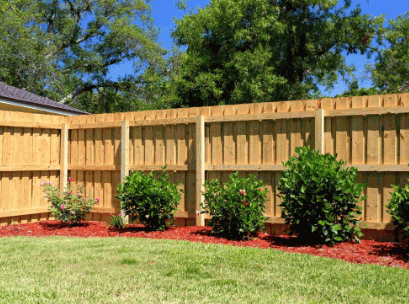
Vinyl Fencing
When compared to vinyl fencing, composite fencing offers a compelling blend of benefits, including enhanced durability, eco-conscious features, and a more natural appearance, while overcoming certain drawbacks associated with vinyl materials.
Composite fencing is renowned for its long-lasting nature, ensuring a sturdy barrier that requires minimal maintenance over time. Composite materials are created using a mix of recycled plastics and wood fibers, making them a more sustainable and eco-friendly option compared to vinyl. The aesthetic appeal of composite fencing is another key advantage, as it can mimic the look of natural wood without the maintenance requirements. On the other hand, vinyl fencing is prone to cracking and fading over time, diminishing its overall lifespan and visual appeal.
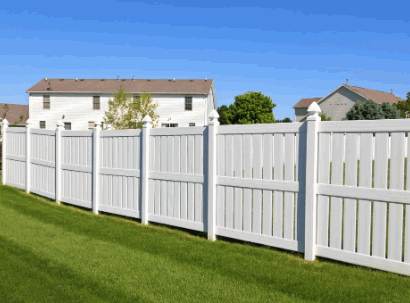
Metal Fencing
In contrast to metal fencing, composite fencing offers lower maintenance requirements, minimal repair needs, and a cost-effective solution for long-lasting and visually appealing fencing solutions.
Composite fencing stands out due to its remarkable durability and resistance to rot, decay, and insect damage, ensuring a longer lifespan without the need for frequent repairs or replacements. These low-maintenance features make composite fencing a popular choice for homeowners looking to enhance their outdoor spaces without the ongoing upkeep associated with traditional fencing materials.
The initial investment in composite fencing may be higher than metal options, but the long-term cost savings from reduced maintenance and repair expenses often make it a more economical choice over time.
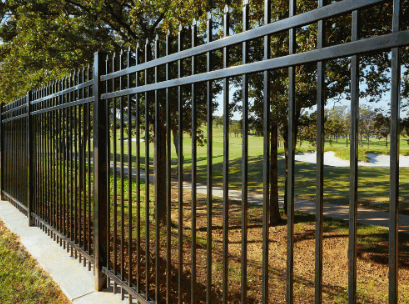
What Is The Cost Of Composite Fencing?
The cost of composite fencing includes both the initial investment and long-term maintenance expenses, with composite fencing often considered a cost-effective solution due to its durability and minimal upkeep requirements.
Homeowners choosing composite fencing can benefit from its longevity and resistance to rotting, warping, and insect damage, which can contribute to significant savings over time compared to traditional wood fencing. While initial costs may be higher for composite fencing materials, the reduced need for staining, painting, or repairs can lead to lower overall expenses in the long run. Composite fencing's superior durability means fewer replacements and repairs, making it a financially sound choice for those looking for a sturdy and cost-effective fencing option.
Initial Cost
The initial cost of composite fencing installation varies based on factors such as fence height, design complexity, and the selected composite brand, with composite fencing generally offering a cost-effective solution in the long run.
- Installation costs for composite fencing can be influenced by the type of design chosen, as intricate patterns or customized styles may require more labor and materials, thereby increasing the overall expenses.
- Factors such as the terrain where the fence will be installed and any additional customization like gates or decorative features can also impact the initial investment.
When considering different composite brands, it's essential to evaluate not only the upfront costs but also the quality and durability offered, as higher-quality composites may result in lower maintenance expenses over time.
Maintenance Cost
The maintenance costs of composite fencing are significantly lower compared to traditional wood fencing, as composite materials require minimal cleaning and upkeep for long-lasting performance and aesthetic appeal.
Composite fencing stands out for its durability and resistance to weathering, eliminating the need for frequent staining or painting. With composite materials, you won't have to worry about issues like rotting, warping, or insect damage that are common with wood fences.
This leads to substantial long-term cost savings as you avoid the expenses associated with regular maintenance tasks. Simplifying your maintenance routine, composite fencing can be easily cleaned with just soap and water, helping you maintain its pristine appearance effortlessly.
Long-Term Cost Comparison
In a long-term cost comparison, composite fencing proves to be a cost-effective option due to its exceptional durability, reduced maintenance costs, and longevity, offering a compelling value proposition for property owners seeking sustainable fencing solutions.
The durability of composite fencing sets it apart from traditional materials like wood or vinyl, as it is resistant to rot, decay, and insect damage, thereby reducing the need for costly repairs and replacements over time. This translates into significant savings for homeowners in terms of both material expenses and labor costs. When considering the overall value proposition, composite fencing emerges as a smart investment that not only enhances the aesthetics of a property but also pays off in terms of long-lasting performance and cost efficiency.


